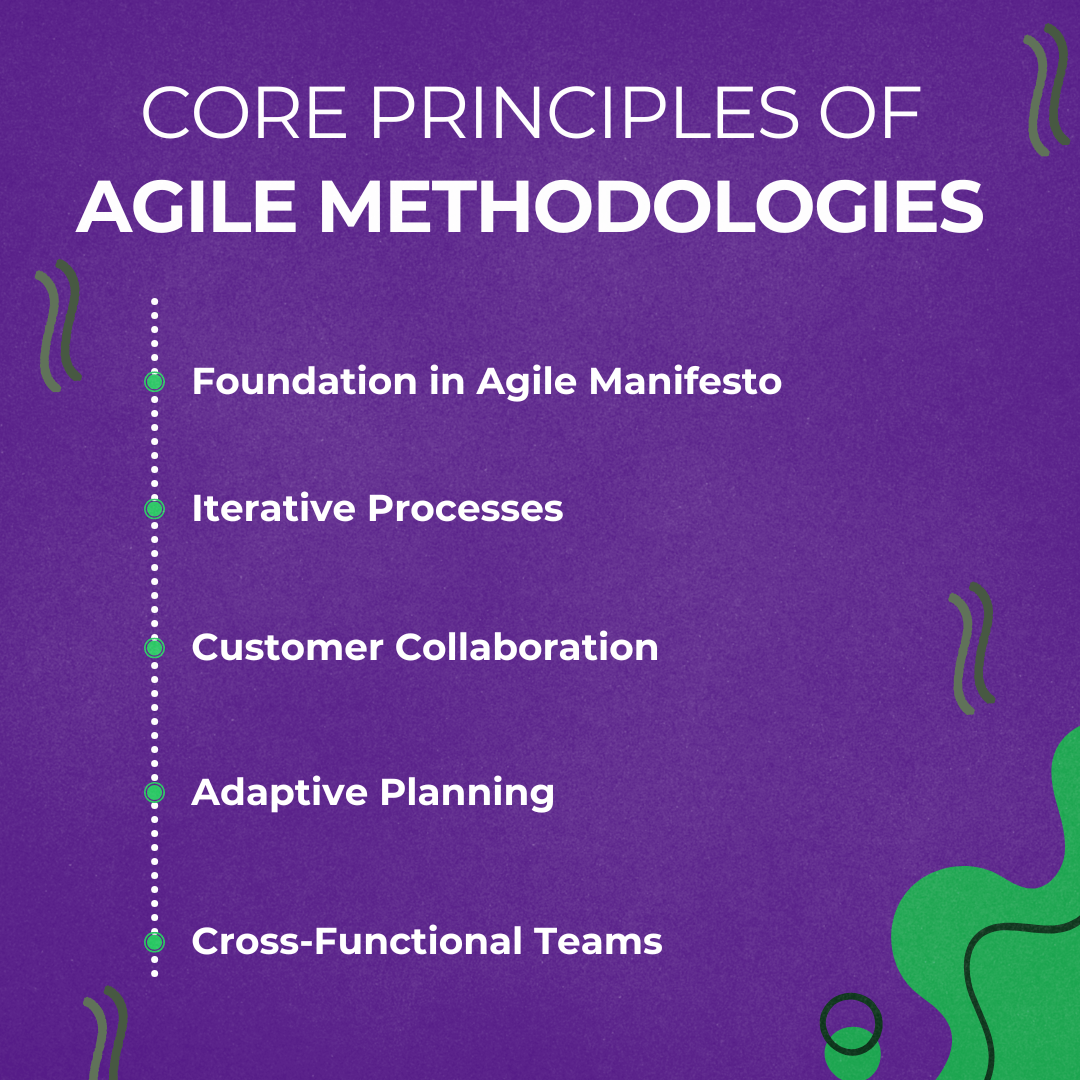Introduction
Struggling to keep your projects on schedule? Many teams encounter difficulties due to rigid, outdated processes, which can result in missed deadlines, budget overruns, and frustrated stakeholders.
Agile methodologies provide a solution by fostering flexibility, collaboration, and continuous improvement. With various options available—such as Scrum, Kanban, and Lean—choosing the right one can be daunting. Gaining a clear understanding of the different Agile methodologies is essential to unlocking your team’s potential and achieving successful outcomes.
Core Principles of Agile Methodologies
Agile methodologies are grounded in a set of core principles that emphasize flexibility, collaboration, and responsiveness to change. These principles originate from the Agile Manifesto, which was introduced in 2001 by a group of software developers seeking a better way to manage projects.
Agile Manifesto: The manifesto emphasizes four core values: prioritizing individuals and interactions over processes and tools, working software over extensive documentation, customer collaboration over contract negotiation, and adaptability over rigid planning.
Common Characteristics: Despite the variety of Agile methodologies, they all share common characteristics. These include iterative processes that allow teams to continuously refine their work, customer collaboration to ensure the final product meets user needs, and a focus on delivering small, incremental improvements instead of waiting for a fully finished product.
Agile principles also promote adaptive planning, allowing teams to adjust their strategies based on real-time feedback. Cross-functional teams are another cornerstone, bringing together members with diverse skills to solve problems collaboratively.
In essence, Agile methodologies prioritize flexibility, user satisfaction, and continuous improvement. Understanding these core principles is essential for effectively implementing any Agile methodology, ensuring that your team remains responsive and adaptable in the face of change.

Overview of Agile Methodologies
Agile methodologies encompass a range of frameworks designed to enhance flexibility, collaboration, and efficiency in project management. Each methodology offers unique approaches, but shares a common goal: to improve how teams deliver value to customers.
Brief Comparison: While Scrum is known for its structured sprints, Kanban focuses on continuous flow. Lean focuses on minimizing waste, while Extreme Programming (XP) concentrates on achieving technical excellence. Every methodology offers distinct advantages and is crafted to meet particular project needs.
Understanding these methodologies allows teams to select the right framework, maximizing productivity and adaptability in their projects.
Detailed Breakdown of Agile Methodologies
Agile methodologies offer diverse approaches to project management, each with distinct features suited for different contexts.
Scrum emphasizes structured sprints and defined roles like Scrum Master and Product Owner, making it ideal for iterative development.
Kanban emphasizes visualizing tasks on a board and managing workflow, making it ideal for continuous delivery.
Lean aims at waste reduction and efficiency, rooted in manufacturing but adapted to software development.
Extreme Programming (XP) prioritizes technical excellence with practices like pair programming and frequent releases.
Dynamic Systems Development Method (DSDM) is a highly structured, user-focused approach, often used in complex projects with tight schedules.
Feature-Driven Development (FDD) is suited for large teams, focusing on iterative design and domain modeling.
Crystal offers flexibility by adapting processes to team size and project criticality, making it ideal for smaller, less critical projects.
Emerging and Hybrid Agile Methodologies
As Agile continues to evolve, new and hybrid methodologies are emerging, combining the strengths of established frameworks.
Emerging Trends include methodologies like DevOps, which integrates development and operations for faster delivery, and Agile at Scale, which adapts Agile practices for large organizations.
Hybrid Agile Models blend elements from different methodologies, like Scrumban, which merges Scrum’s structured sprints with Kanban’s continuous flow. Lean Startup combines Lean principles with Agile’s iterative development to drive innovation in uncertain environments.
These methodologies cater to specific project needs and help teams stay competitive in a rapidly changing landscape.
Selecting the Right Agile Methodology
Choosing the right Agile methodology depends on your team’s needs, project type, and organizational context.
Considerations: Evaluate factors like team size, project complexity, and stakeholder involvement. For example, Scrum works well for small teams focused on iterative development, while Kanban suits continuous workflows. Lean is ideal for efficiency-driven projects, and XP is best for projects requiring technical precision.
Decision Matrix: Use a simple decision matrix or flowchart to guide your choice, matching your project’s requirements with the most appropriate methodology. This strategic selection ensures your Agile implementation aligns with your goals, maximizing productivity and success.
Key Takeaways
- Agile Core Principles: Agile prioritizes flexibility, collaboration, and ongoing improvement, all rooted in the Agile Manifesto.
- Methodology Overview: Scrum, Kanban, Lean, XP, DSDM, FDD, and Crystal offer distinct approaches to Agile project management.
- Emerging Trends: Hybrid models like Scrumban and new methodologies like DevOps are shaping modern Agile practices.
- Methodology Selection: Choose the right methodology based on team size, project complexity, and specific needs.
- Strategic Implementation: Proper alignment of Agile practices with project goals ensures maximum productivity and success.
Conclusion
Understanding and selecting the right Agile methodology is crucial for optimizing project outcomes. Agile offers a variety of frameworks, from Scrum's structured approach to Kanban's continuous flow and Lean's focus on efficiency. Emerging and hybrid methodologies, like DevOps and Scrumban, provide even more flexibility.
The key to successful Agile implementation is choosing a methodology that aligns with your team's needs and project goals. By leveraging the right approach, teams can enhance collaboration, adaptability, and overall project success in today’s dynamic work environments.

